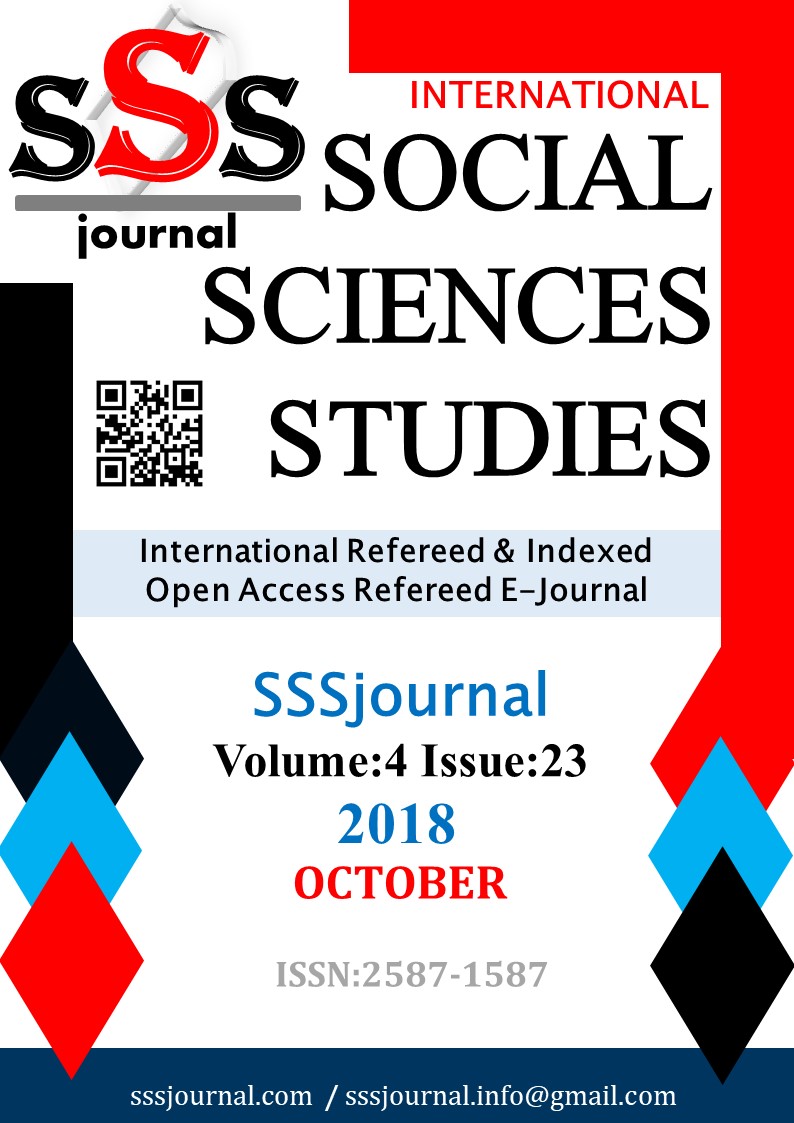Author :
Abstract
Bu çalışma, paleoantropoloji alanında 2015–2017 tarihler arasında Nature, Science, Science News, Discover, General Anthropology, Proceeding of the National Academy of Sciences of the United States of America dergilerinde yayınlanmış makalelerin derlenmesidir. Bu çalışmada Yeni Dünya Maymunlarının Kuzey Amerika’yı keşfinden, Avrupa’daki en erken ateş kullanım izlerine, en yakın tarih öncesi akrabalarımız olan Homo neandertaller’in Avrupa’da ortaya çıkışından ve yayılışından, Homo neandertaller ve Homo sapiens arasındaki genetik ilişkiyi gösteren antik genom çalışmalarına kadar birçok konu toplanmıştır. Avrupa, Neandertal ve erken modern insan toplulukları ile ilgili önemli bir bölgedir. Dolayısıyla, son yıllarda bu kıtadaki Neandertal ve erken modern insan topluluklar hakkındaki veriler toplanmaya çalışılmıştır. Karbon–14 kullanılarak elde edilen yeni tarihlendirmeler ve yeni antik genom çalışmaları da bu çalışmada derlenmiştir. Söz konusu çalışma, paleoantropolojideki keşiflerin önemini genel okuyucu ile uzmanlaşmış okuyucuya aktarma ve bu konudaki eksikliklerin giderilmesi amacıyla hazırlanmıştır.
Keywords
Abstract
This study is a compilation of articles published in paleoanthropology between 2015 and 2017 in the journals of Nature, Science, Science News, Discover, General Anthropology, and Proceeding of the National Academy of Sciences of the United States of America. From discovery of North America by Platyrrhini, to the earliest evidences of fire use in Europe; from the emergence and spread of Homo neanderthals in Europe to the ancient genome studies showing the genetic relationship between Homo neanderthals and Homo sapiens, many subjects were compiled. Europe is an important region related to Neanderthal and early modern human communities. Therefore, data on Neanderthal and early modern human communities in this continent in recent years have been tried to be collected. The new datings obtained by using Carbon-14 and ancient genome studies were also compiled in this study. This study was prepared in order to transfer the importance of discoveries in paleoanthropology to general reader and specialized readers, and eliminate the deficiencies in this matter.
Keywords
- Bloch, J.I., Woodruff, E.D., Wood, A.R., Rincon, A.F., Harrington, A.R., Morgan, G.S., Foster, D.A.,Montes, C., Jaramillo, C.A., Jud, N.A., Jones, D.S. & MacFadden, B.J. (2016). “First North American fossil monkey and early Miocene tropical biotic interchange”. Nature: 533:243-246.
- Bower, B. (2016). “Cave holds earliest signs of fire-making in Europe”, ScienceNews, Jun 19. Callaway, E. (2016). “Ancient DNA pinpoints dawn of Neanderthals”, Nature, 531:286.
- Fu, Q., Hajdinjak, M., Moldovan, O.T., Constantin, S., Mallick, S., Skoglund, P., Patterson, N., Rohland, N.,Lazaridis, I., Nickel, B., Viola, B., Prüfer, K., Meyer, M., Kelso, J., Reich, D.& Pääbo, S. (2015). “An early modern human from Romania with a recent Neanderthal ancestor”. Nature: 524:216-219.
- Fuss, J., Spassov, N., Begun, D.R. & Böhme, M. (2017). “Potential hominin affinities of Graecopithecus from the Late Miocene of Europe”, PLOSone May 22.
- Gibbons, A. (2016). “Five matings for moderns Neandertals”, Science, 351:6279:1259-1251.
- Harmand, S., Lewis, J.E., Feibel, C.R., Lepre, C.J., Prat, S., Lenoble, A., Boës, X., Quinn, R.L., Brenet, M.,Arroyo, A., Taylor, N., Clément, S., Daver, G., Brugal, J.P., Leakey, L., Mortlock, R.A., Wright, J.D.,Lokorodi, S., Kirwa, C., Kent, K.V., Roche, H. (2015). “3.3 million-year-old stone tools from Lomekwi 3, West Turkana, Kenya”. Nature, 521:310-315.
- Hervella, M., Svensson, E.M., Alberdi, A., Günther, T., Izagirre, N., Munters, A.R., Alonso, S., Ioana, M.,Ridiche, F., Soficaru, A., Jakobsson, M., Netea, M.G. & de-la-Rua, C. (2016). “The mitogenome of a35,000-year old Homo sapiens from Europe supports a Palaeolithic backmigration to Africa”, Nature, Scientific Reports 6: doi:10.1038/srep25501.
- Kuhlwilm, M., Gronau, I., Hubisz, M.J., de Filippo, C., Prado-Martinez, J., Kircher, M., Fu, Q., Burbano,H.A., Lalueza-Fox, C., De la Rasilla, M., Rosas, A., Rudan, P., Brajkovic, D., Kucan, Z., Gušic, I., Marques-Bonet, T., Andrés, A.M., Viola, B., Pääbo, S., Meyer, M., Siepel, A. & Castellano, S. (2016). “Ancient gene flow from early modern humans into Eastern Neanderthals” . Nature, 530:429-433.
- Mondal, M., Casals, F., Xu, T., Dall’Olio, G.M., Pybus, M., Netea, M.G., Comas, D., Laayouni, H., Li, Q.,Majumder, P.P. & Bertranpetit, J. (2016). “Genomic analysis of Andamanese provides insights into ancient human migration into Asia and adaptation”. Nature Genetics, 48:1066–1070.
- Rice, P.C. (2016). “Paleoanthropology 2016, Part 2: Recent Finds”. General Anthropology, 23:2:11-12.
- ScienceNews. (2017). “Graecopithecus freybergi: Oldest Hominin Lived in Europe, not Africa” May 24.
- Tarlach, G. (2016). “Ancient Monkey Teeth Change Evolutionary Timeline”, Discover January/February. Waterman, H. (2016). “Tool Time’s New Start Date”. Discover, January/February.
- Welker, F., Hajdinjak, M., Talamo, S., Jaouen, K., Dannemann, M.&David, F., Julien, M., Meyer, M., Kelso,J., Barnes, I., Brace, S., Kamminga, P., Fischer, R., Kessler, B.M., Stewart, J.R., Pääbo, S., Collins, M.J. &Hublin, J.J. (2016). “Palaeoproteomic evidence identifies archaic hominins associated with theChâtelperronian at the Grotte du Renne”, Proceeding of the National Academy of Sciences of the United States of America, 113:40: 11162-11167.





